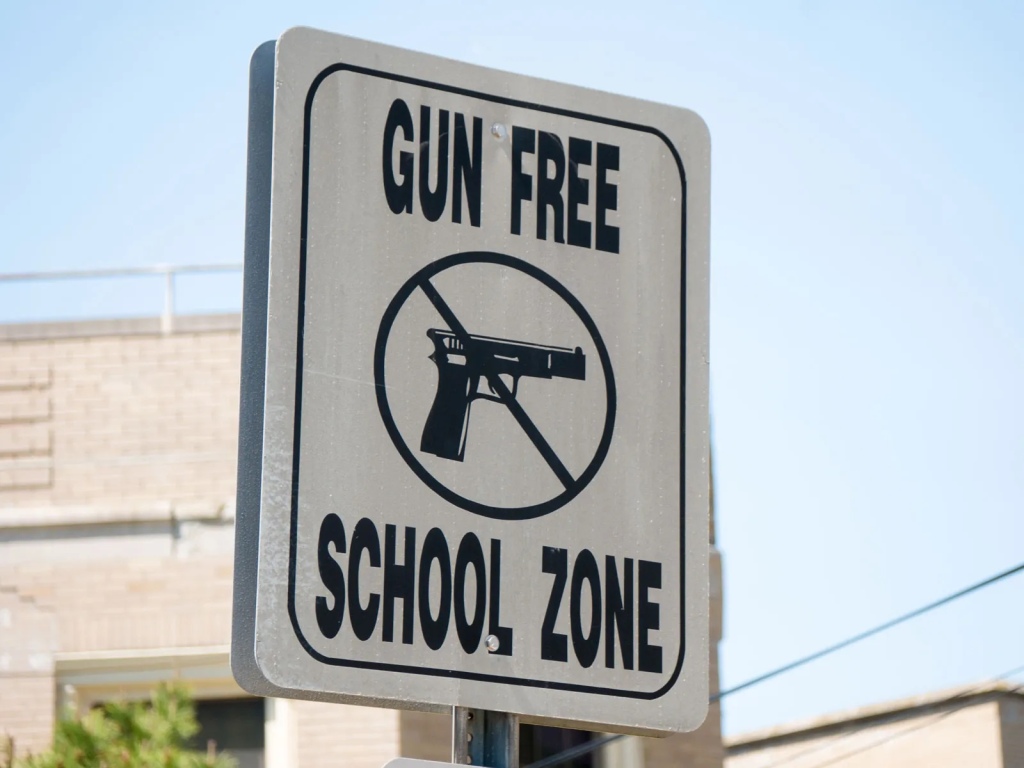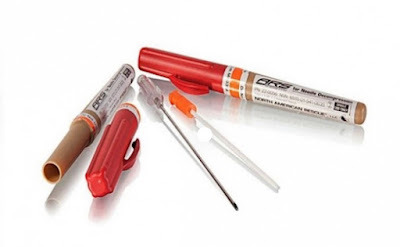The views expressed in this article are those of the author and do not necessarily reflect the views of Gunset Training Group or its affiliates.
Click HERE to view the original post on the GunSnobbery Blog
Author’s note: this is part 11 in a series of educational posts I am going to write about State of Ohio and federal weapon and firearm laws. Part 1 can be found here. There is a list of the previous articles at the bottom (or side, depending on your device) of the page. This post does not offer legal advice. I am not a lawyer. I am a Certified Firearm Specialist through the International Firearm Specialist Academy and the State of Ohio certifies me to teach Ohio’s weapon laws in the Basic Police Academy. I’ve spent quite a bit of time studying federal law and Ohio’s laws in 30 years on the job. More than anything, this series of posts is an attempt to educate people on portions of the law and to show them where they can find the laws so that they can educate themselves further. Please consult with an attorney who specializes in firearms and weapons law if you have questions that require a legal opinion. If you are a law enforcement officer, check with your jurisdiction’s legal counsel for guidance. And remember, not all attorneys are created equal. And keep in mind that laws, interpretations of laws and definitions change. So what was current at the time I published this article may have changed over time.

The title of this statute says a lot. To make this easier to follow, I’m going to start with the end of the title and work my way back. So what is a school safety zone? When I used to teach CCW classes, I would ask that question and the most common answer was something about the 20MPH zone that kicks in by schools when the lights are flashing. While that is a school zone, it isn’t what we are talking about here. So what is a school safety zone? That’s a really good question. And guess what? This particular section of the Ohio Revised Code doesn’t tell you what a school safety zone is. For that, you have to look to Section 2901.01 to find the answer. At least part of the answer. In 2901.01, you’ll see that a school safety zone consists of a “school, school building, school premises, school activity, and school bus”.

But that doesn’t tell the whole story, because those terms have their own definitions, most of which are not in 2901.01. For example, the definition of “school”, “school building” and “school premises” are found in a different Section – 2925.01, which is the Ohio Revised Code section that deals with most drug offenses. Why would it be in the drug offense section? Easy, committing certain drug offenses in a school safety zone or “committed in the vicinity of a school” make the offense a higher level of violation. Which means the penalties are higher. Throwback to the 80’s and the War on Drugs.

Take a minute to read the definitions below, paying special attention to the areas I highlighted.




The definitions themselves aren’t earth shattering, but people who carry guns must remember that a “school”, “school building” or “school premises” is always a school, school building or school premises, no matter what the building is actually being used for. Confused about why that’s important? Well, think about this – quite often, churches rent out schools to hold their Sunday services. So even in the summer or on the weekends when school is out and the only people using the “school building” are the church people, it is technically still a “school building” under the law. So the church leaders cannot legally give permission for people to carry at church. I’m not sure the school itself could even grant that permission with the way the law is worded. Another example? Schools that rent out their gymnasium or sports fields to private sports clubs or leagues. Volleyball, peewee baseball, soccer, or any other sport. How many of you reading this are thinking, “well, I broke that law” right now?

“School activity” is probably the most misunderstood category of “school safety zones”. Think about it, how many activities meet the definition? Some are fairly obvious like field trips. But field trips bring their own set of issues. If I go to a local museum and I’m legally carrying a pistol with me because there is no sign prohibiting me from doing so and a school group on a field trip comes in, am I now breaking the law because I’m now in a school safety zone? Good question and I don’t have a good answer for you because I don’t know if it has ever been addressed in court. I looked and looked, but couldn’t find a case that specifically addressed that scenario.
What about the not so obvious activities? School choir performances at a local mall? Where does the “school activity” school safety zone end inside the mall? Parades where the school band plays and marches? How about this one – swim meets that don’t take place at a school? Our local school doesn’t have a pool of their own so they practice and have meets at a local private swim club. All of those appear, at first glance, to meet the definition of a “school activity”; however, once again I’ve not been able to find a court case that deals specifically with school activities and carrying a concealed weapon. Do you want to be a test case? That could get expensive. Have I mentioned how ridiculous Ohio’s firearms laws can be?

School buses aren’t hard to figure out, but remember that under the statute, private buses owned by companies like First Student are included in the definition just like school owned buses.

So now that we understand (hopefully) where this statute applies, let us look at the rest of the statute.
First, the mental state for this statute under (A) and (B) is “knowingly”:

Second, let’s talk about “convey” and “possess”. Convey means bringing or transporting something (in this case, a deadly weapon or dangerous ordnance) into the school safety zone. Possession can be broken down into active/actual possession or what’s called “constructive” possession. Active/actual possession means you have physical control over something. Meaning it’s in your holster, or the backpack you’re wearing, etc. Constructive possession means you have the “ability and intention to exercise dominion and control” over something, but doesn’t require you to physically have your hands on it.
Third, let’s specify that this statute bans more than just firearms, it bans any “deadly weapon or dangerous ordnance”.

So knives (yes, knives), guns, brass knuckles and any other deadly weapon or dangerous ordnance are banned under this statute. If you remember from this article, “deadly weapons” covers just about anything once that thing is carried or used as a deadly weapon.
And that’s where the courts come in. The courts throughout the years have had to decide what makes a knife, or anything else, a “deadly weapon”. How did they do that? If you read this case you’ll see a list of court cases where they looked at knives to determine whether or not that knives was considered a deadly weapon. Here’s a list of what the courts said were characteristics of knives that would more than likely be considered deadly weapons: 1) a blade that can easily be opened with one hand, such as a knife with a switch, a spring-loaded blade, or a gravity blade capable of instant one-handed operation; (2) a blade that locks into position and cannot close without triggering the lock; (3) a blade that is serrated; (4) a blade tip that is sharp; (5) an additional design element on the blade, such as a hole, that aids in unfolding the knife with one hand; (6) does not resemble an “ordinary” pocket knife; and (7) is a type of knife considered a weapon for purposes of R.C. 2923.20(A)(3). How many of you carry knives that have those characteristics? I’d wager that most of us do.

And finally, this statute bans certain replica, airsoft or BB guns in school safety zones under specific conditions. For example, take the airsoft gun in the picture below – a replica of the Sig P228. If a person brought that into a school safety zone and simply told someone that it was a firearm, they would then be in violation of (C).

As with most laws, there are exceptions to this prohibition. For non-law enforcement/private security, there is only one exception that allows someone to carry a loaded firearm in a school safety zone outside of their vehicles. And that exception is for certain armed school staff who have met certain training criteria.
For everyone else, the only way to have a loaded firearm in a school safety zone requires certain things:


First and foremost, to carry a loaded pistol in a school safety zone, the person carrying the pistol must comply with federal law. In order to be compliant with 922(q)(2)(B), the person carrying the loaded pistol must have a concealed handgun license from their state.

Permitless carry does not apply to this section of the Ohio Revised Code. Yes, this is one of the few situations where you actually have to have a concealed handgun license to legally carry your pistol.

Second, if you do have a concealed handgun license and carry into a school safety zone, the loaded pistol must stay locked in your car if you need to go into the school buildings.
Having said all of that, this may all change in the near future due to cases currently in the appeals process. I’ve said it before – the Bruen decision has changed the face of 2nd Amendment jurisprudence and we will be seeing the ripple effects of this decision for years to come. Here is a good article about Bruen.
In the next article I’ll jump into 2923.123 – carrying into a courthouse.




